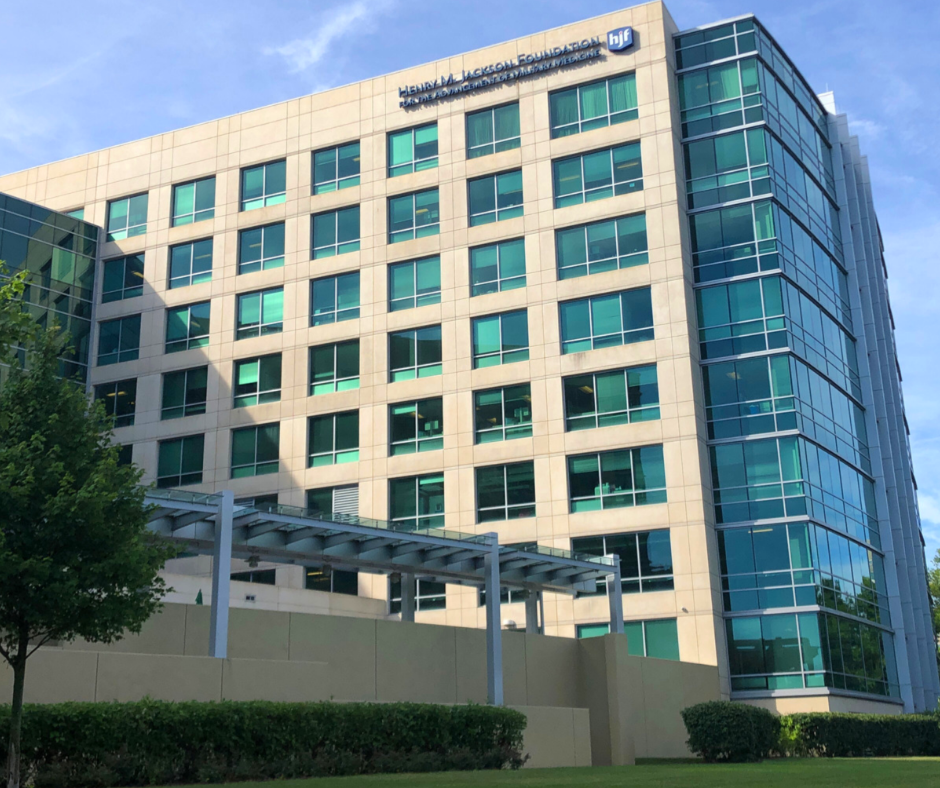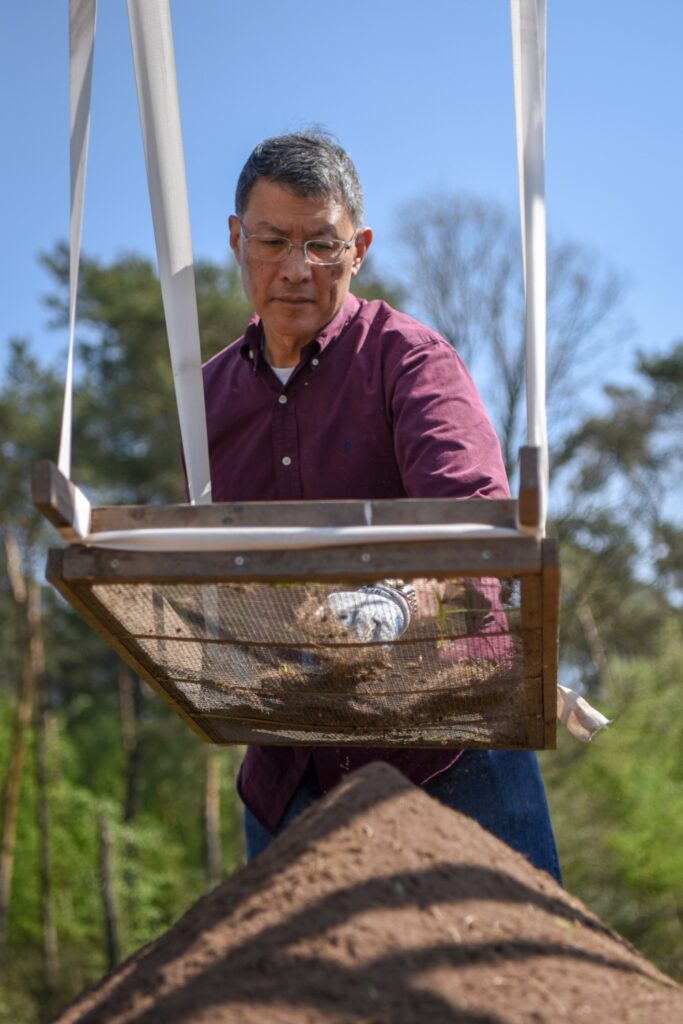
The Bethesda, MD, headquarters of the Henry M. Jackson Foundation.
It took a five-year commitment from the Henry M. Jackson Foundation and a multi-million-dollar collaborative research effort across private and public sectors, but a broad perspective about the challenges facing America’s veterans transitioning from military into civilian life is emerging into view.
The logistics of The Veterans Metrics Initiative (TVMI) were immense with an all-encompassing cross-section of study groups and a research framework straddling domains—those who recently separated from active duty under the purview of the Department of Defense (DoD), those from the Department of Veterans’ Affairs (DVA), and the military veterans who fall through the cracks as he/she transitions into the civil sector.
“I think what’s about TVMI is that identify who is at greatest risk,” said U.S. Army Maj. Gen. (Ret.) Dr. Joseph Caravalho, president and chief executive officer of the HJF, in Bethesda, MD.
At the core of the project is a new metric, the first of its kind, that measures a veteran’s overall state of well being within four areas: vocation, finances, social relationships, and mental and physical health. By compiling and analyzing the data, TVMI research teams successfully formed a baseline standard to assess programs and services aimed at military veterans transitioning into the civilian sector.
There are roughly 40,000 such programs in the U.S. today. Not all align with veterans’ wants or needs, however. Some individuals need help with transportation, others want assistance finding employment, others still have health issues that prevent them from getting a job.
A new study from Penn State, one of TVMI’s research investigators, reported that compared to veterans of other wars, those who served following September 11, 2001, had the highest unemployment rate, particularly among young male veterans.
While the majority of servicemembers transition smoothly into civilian life, barriers that are both real and perceived can prevent an individual from taking advantage of these programs. The reasons range from a lack of awareness about the available services to failing to understand how they might qualify for assistance. Stigma can also be a factor.
“These who join the military, they’re tough,” said Caravalho. “when you’re tough, you don’t say, ‘I need help.’”

In this Army photo, HJF President and CEO Joseph Caravalho is pictured helping in the effort to account for captive, missing, or otherwise unaccounted-for personnel, which is being spearheaded by the Defense POW/MIA Accounting Agency.
Without assistance, navigating one’s way back into civilian life can prove challenging for military veterans—financially, professionally and emotionally—potentially leading to unwanted outcomes such as joblessness, feelings of desperation, self-medication, alcohol abuse, lack of motivation, even suicide.
TVMI took a quantifiable approach in the effort to assess those individuals potentially facing challenges and to identify the programs best able to address their particular needs before they become insurmountable obstacles. The net result is a verifiable data set of information that has the potential to enhance the long-term well being of the nearly 250,000 veterans projected to leave military service annually over the next four to five years.
As the implementing partner between DoD medicine and civilian entities, HJF is hopeful that both the DoD and the DVA will review TVMI’s findings with an eye toward future studies and/or establishing new policies, “focusing their efforts on what the biggest bang for their buck is,” said Caravalho.
HJF also has plans to establish a series of roundtable discussions between the DoD and civilian stakeholders in order to share key areas of focus, opening up channels of communication between distinct operational cultures. HJF is well positioned to initiate the dialogue, spanning as it does public and private spheres of influence.
Established in May 1983 with the signing of a bill by President Ronald Reagan, the non-profit organization today supports national and international initiatives across a broad spectrum of research areas, from traumatic brain injury to HIV and other infectious diseases. HJF has roughly 3,000 full-time employees and manages more than 700 research grants, contracts, and cooperative agreements.
With the recent acquisition of CAMRIS International, a 250-employee international development and health research firm in Bethesda, HJF is poised to expand its reach through a company experienced at implementing large institutional contracts. CAMRIS will operate as a wholly owned subsidiary, its board of directors comprised of representatives from both entities.
Caravalho is optimistic about the new acquisition and the prospects it brings, with CAMRIS’ alignment with HJF’s mission to advance military medicine and global health.
Partnerships have long been a vital component of HJF, enabling the “connective tissue” between private and public sectors through collaborations with institutions, organizations, corporations, universities, hospitals, and government agencies. Its initiatives run the gamut in size and scope, and cover everything from research to rehabilitation. For example, HJF is working with defense electronics firm Leonardo DRS on the “Look Good Feel Better” public-service support program aimed at giving active and retired military men, women, and family members affected by breast cancer an improved quality of life as they undergo and recuperate from cancer treatment.
Last year, HJF also worked with the Defense POW/MIA Accounting Agency, helping their mission to account for missing or otherwise unaccounted-for personnel.
“There is a psychological benefit to those family members and those currently serving to know that this country will never stop looking for you,” said Caravalho, who traveled to Renken, Germany, to help in the effort.
The current COVID-19 pandemic is bringing HJF into partnership with the DoD on its Operation Warp Speed initiative—a public/private collaboration whose central goal is to develop, produce, and distribute 300 million doses of COVID-19 vaccines by January of next year (should a vaccine be approved). In all, HJF is managing more than $100 million of COVID-19 related research.
“It’s exciting to be in this space because we’re expressly directed to advance military medicine, which is just a couple of chess moves away from civilian health and global medicine,” said Caravalho.
Despite shouldering the weight of many portfolios, HJF’s programs invariably neck down to the men and women serving the country.
Army Ranger Ryan Davis was gravely injured in Afghanistan after a grenade on his hip was remotely triggered. He was given a 30 percent chance of making it back to the states alive. Because of the Joint Trauma System (JTS), which is part of the DoD Center of Excellence for Trauma, and its research in trauma readiness, Davis survived, benefiting from every advance in combat casualty care successfully delivered over the last 10 years.
This year, HJF awarded its Hero of Military Medicine Ambassador Award to JTS.
Davis, who found himself the recipient of life-saving critical care during his fifth tour of duty, has moved from being someone who loves to run to someone fitted with prosthetics, having battled his way through blood clots, infections, and amputations. The challenges he faces transitioning into civilian life might conceivably be eased by the TVMI findings
These have the potential to help him and veterans like him align with programs and services best able to help them thrive, both as individuals and as participating members of the community and society.
Nothing would make Caravalho happier, standing as he does in service to the ethic cura personalis, or to “care for the individual person” as a proud member of the HJF team.
“When you think about it—the military—it’s really humanity.”





















